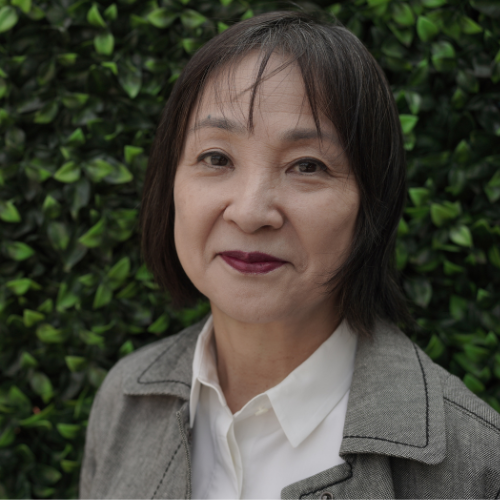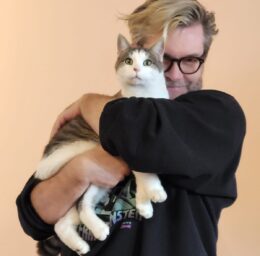Art for Contemplation
Just open your eyes and look!
James McNeill Whistler, Nocturne in Black and Gold, the Falling Rocket, 1875
By Kevin Townley
It was an odd word to use in a painting’s title—Nocturne—a musical term used to describe a composition that evokes the qualities of nighttime.
In Victorian England art had a very specific purpose: to realistically represent the thing it was depicting. Art was meant to convey narrative and moral principles, not to evoke a vibe, or to let beauty speak for itself. But that was precisely what James McNeill Whistler (1834-1903) intended when he painted this abstracted scene of fireworks exploding over London’s Cremorne Gardens.
When Whistler first presented Nocturne in Black and Gold, the Falling Rocket at the Grosvenor Gallery in 1875 he was met with incredulity and rage. The critic John Ruskin was particularly incensed, accusing Whistler of “flinging a pot of paint in the public’s face.” Whistler then made the surprising move of suing Ruskin for libel. In the trial, Ruskin’s lawyer asked Whistler how long it took him to complete The Falling Rocket. When Whistler said it had only taken him two days, the indignant lawyer replied, “The labor of two days, is that for which you ask two hundred guineas?” Whistler’s famous riposte was, “No, I ask two hundred guineas for the knowledge I have gained in the work of a lifetime.” After two days the court found in favor of Whistler, but only awarded him one farthing in damages. Though this headline-grabbing trial was ultimately ruinous for both parties (court fees drove Whistler into bankruptcy and Ruskin’s reputation as a visionary critic was tarnished), it is seen by many historians as a turning point in western art, where people reevaluated the fundamental question: What is art for? Was it truly an elevated kind of craftsmanship where an audience could see the world clearly reflected back to it? Or could there be, as Theophile Gautier put it, “Art for art’s sake”?
As someone who humbly toils in that hard-to-find quarry called creativity, I have often wondered, Why the hell am I doing this? What, after all, is art for? Obviously this is something that anyone can contemplate on their own if they want to, but it seems to me that artmaking is the process through which we remind ourselves that every aspect of the world is sacred. To communicate how a thing is rather than how it appears is to remove the barrier between subject and object. Through the creative ritual of looking, feeling, and offering, we re-present the world back to itself in a new way. Artmaking is a form of protection. We sanctify our fragile world by capturing something of it in order to share it with ourselves and others. To communicate anything at all through art is to both transmute it irrevocably and to save it from oblivion. The knowledge Whistler claimed arose from a lifetime of looking. His aesthetic appreciation for the ordinary world was honed into a profound sense of awe, which he reflected awesomely back to us through his art. The subject matter of his contentious Nocturne might have been fireworks fading into the darkness, but through the act of painting them he also captured what it is to love something even as you’re losing it. To create anything at all, whether it’s a painting or a baby, in a world that is, by its nature, constantly falling apart is a profoundly sacred act. Or as Elizabeth Mattis Namgyel said, “Burning with love in a world you can’t fix is the Bodhisattva path. You never really arrive at a fixed state because there is always a continuous opening up. Can you bear not arriving?”
I still vividly remember being glued to the TV as the election results came in. Things were not going the way we’d hoped they would. Finally the news anchors called it for the Republicans and our tiny gathering heaved a collective shudder. “We’re entering some very dark times,” my father said. “I don’t know how we’re going to get through this.” Michael Dukakis had lost decisively to George Bush and a wave of dread coursed through me. It truly felt like the end for us all. But of course it wasn’t. Something else happened. And then many other things have happened since then and the person called Michael Dukakis who many of us pinned our hopes of salvation upon became a fuzzy footnote. My mood after the most recent election was quite nocturne-like; the sense of darkness closing in all around me was palpable. When I closed my eyes and tried to connect a visual to these churning emotions, what I saw was a roiling, smoky horizon, noxiously green-black, pocked with tiny portals of light. It was quite beautiful in its way; if I were a painter it would have made a fabulous picture. As I stayed with this image a bit longer I realized someone already had painted it: James McNeill Whistler. Through his Nocturne he wasn’t providing me with a political roadmap for social reform, but he did seem to be saying, as all great artists do: There! Above the horizon! Can’t you see it? Just open your eyes and look!







1 Comment
Thank you, Kevin, for reminding me/us that we have been in dark, dire times all throughout history and we must keep our eye on the horizon, past the noxious smoke, and look for the portals of light, however faint they are. Indeed, may we strive to be specks of light in the world. Life begins in darkness, the womb and the ground of earth being examples.
I also like your perception that Whistler was illustrating how it is possible, maybe even crucial, to love something even as we are losing it.
Sharron